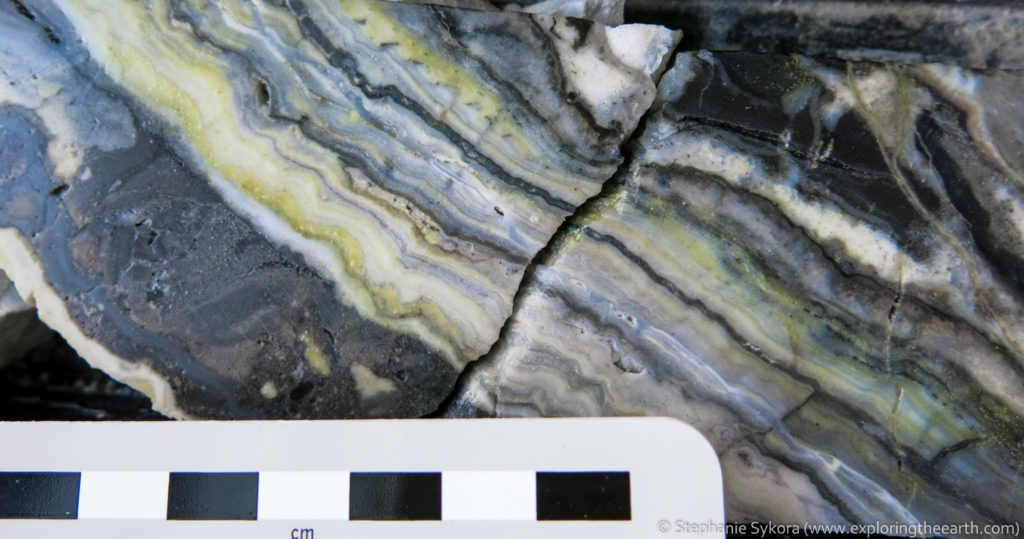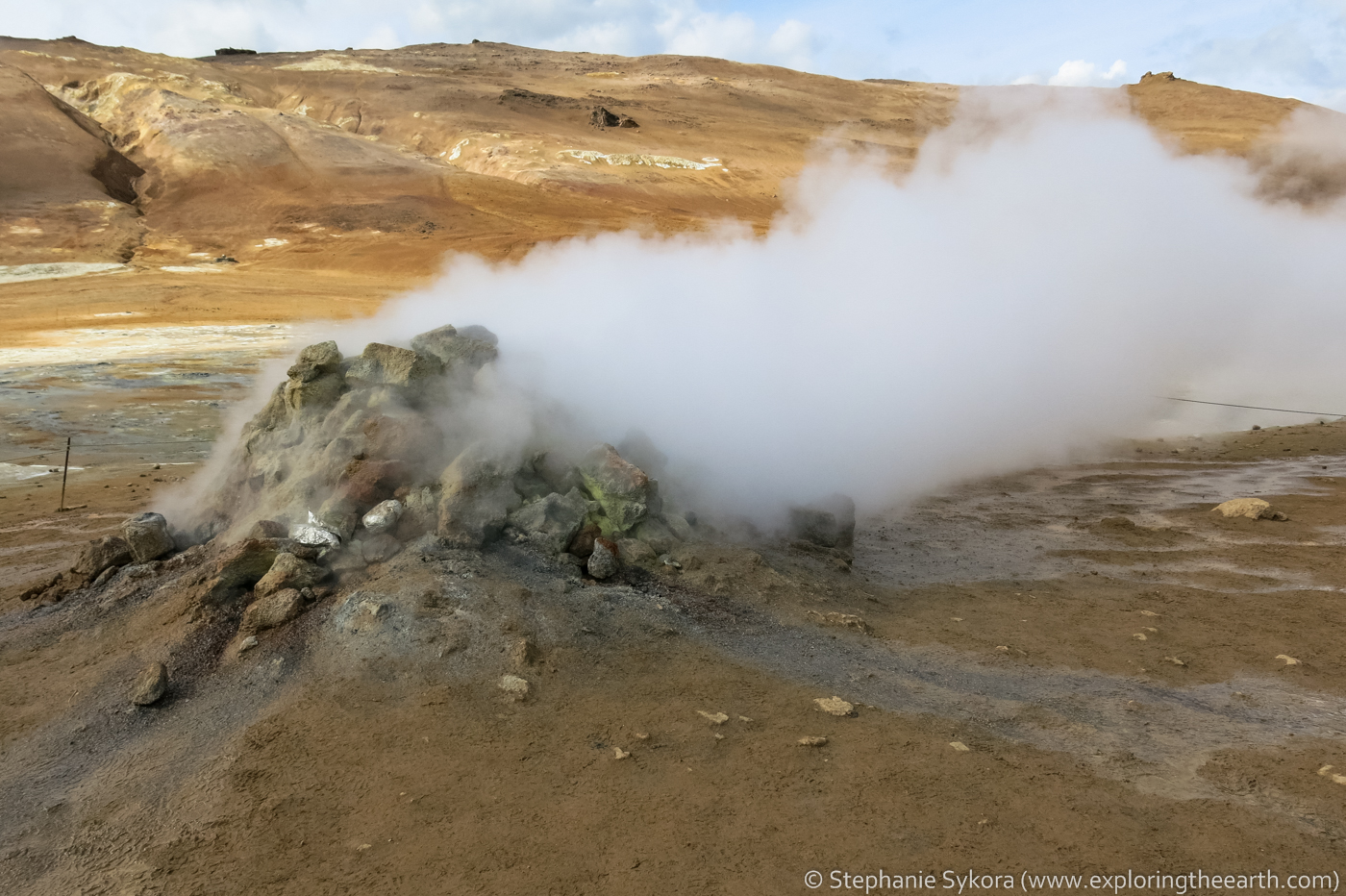What is gold? Simply stated, gold is an element (Au) and a mineral – one of the few single-element minerals. Gold on Earth is rare, valued and extra-terrestrial, having originated from prodigious star explosions and possibly brought to Earth by catastrophic asteroid bombardments around four billion years ago. With time, gold has been concentrated in the Earth’s crust by a variety of geological, physical, chemical and biological processes, locally forming ore deposits.

Why is gold valuable?
Gold has been sought after since ancient times (5000+ years ago), and is still valued today, both for its beauty, store of wealth and durable nature. For example, gold is resistant to corrosion and does not tarnish. It can be flattened to fractions of millimetres thick. It is also highly stable and an excellent conductor of electricity, and is used in numerous industrial application. About 50% of the gold in the world is either as decorative artefacts or jewellery, whereas ~35% is used for currency and industrial use accounts for ~15%.
In the 14th century BC, Egyptians used gold to lavish tombs and eventually learned to alloy gold with other metals. And it was around 500 BC in Turkey that the first gold coin came about. Now our methods of extracting and manipulating gold has become far more sophisticated. The movement of refining gold and other metals led to the quest to form gold from other metals, known as alchemy. Just recently scientists in China have preformed a type of alchemy, turning copper into a substance that in some circumstances behaves like gold (however, it is actually very far from the real thing).

What are gold deposits?
Gold occurs in a wide range of ore deposit types, which can be roughly defined as either primary ore deposits (e.g., lode gold-in-quartz-veins) or secondary ore deposits (e.g., placer gold). Gold in all ore deposits is typical in the form of native gold and/or electrum (a naturally occurring alloy of gold and silver, with a little copper), or within the crystal structure or as small nano-inclusions within other minerals (e.g., pyrite).

Primary ore deposits
Geologists have many different names and classifications to primary ore deposits with gold, and confusingly there isn’t just one factor used to define and separate them. Some examples are gold deposits that formed around magmatic-hydrothermal centers (i.e., porphyry copper-gold deposits, epithermal gold-silver deposits, skarn gold deposits, iron-oxide-copper-gold (IOCG) deposits, intrusion-related gold deposits). Other types of gold deposits are sub-seafloor volcanic-hosted massive sulfide (VHMS) deposits, and basin-hosted gold-rich sedimentary-exhalative deposits. There are also syn-deformational gold deposits in metamorphic terrains and greenstone belts (orogenic lode Au deposits), Carlin-type gold deposits (characteristic of gold “trapped” within the mineral pyrite), as well as conglomerate-hosted gold-uranium deposits (e.g., the massive Witwatersrand deposit in South Africa).




Secondary ore deposits
Secondary gold deposits are what most prospectors look for (e.g., prospectors in the American gold rushes). The most popular are called placer gold deposits. These form due to gold in a primary ore deposits being exposed at surface to the atmosphere and all the elements (e.g., erosion from wind and water over time). These surficial processes break down the rocks and minerals that host the gold, and because gold is so resilient, heavy and virtually indestructible, it will be transported and eventually accumulate and concentrate somewhere, like a river bed channel. Gold is very dense, thus is why it sinks and can be accumulated and panned for in river beds. Gold nuggets (i.e., a nugget is defined as > 1 g and > 4 mm), like those found in the outback, are also a form of secondary gold deposit where the original primary gold has been transported and physically concentrated.
The largest gold nugget even found was in Australia in 1869. It has a name “Welcome Stranger”, and weighs about 2316 troy ounces, and at today’s price (~$1280/ounce) would be worth almost $3 million US dollars.

How does gold form? How can it be concentrated and transported?
Gold (in primary ore deposits) is concentration and transported as dissolve species in hot fluids (i.e., liquid, vapour or supercritical fluid), known as hydrothermal fluids. These hydrothermal fluids could be heated groundwater or other sources of fluids within the Earth’s crust.
Gold is very tough to dissolve, but can be dissolved in a strong acid like hydrochloric acid mixed with nitric acid (also known among chemists as aqua regia “royal water”), which in process converts Au to Au3+ (due to its strong oxidizing nature). This oxidation of gold makes it available for complexing with Cl− ions (to form aqueous species like AuCl4) or with HS− and S2O32− ligands (to form species such as AuHSo, Au(HS)2− and Au(S2O3)23−),or with CN− ligands (to form Au(CN)2−), or possibly even complexation with organic or inorganic carbon-based material (e.g., microorganisms, hydrocarbons like bitumen). The ligand or ions gold will complex with depends on conditions of the transporting hydrothermal fluid, such as the oxidization state, salinity and acidity.


Deposition
So now we know how it is transported, but what next? It needs to be deposited somewhere and somehow, in a sort of “trap”. Because we know how gold dissolves we can apply the reverse conditions to determine how it is deposited (e.g., Le Châtelier’s principle, considering equations like: AuS + HS− + H+ + ¼O2 ↔ Au(HS)o + ½H2O). So if there is a decrease in the ions or ligands, or oxidation state, or increase in pH, gold will deposit. This can be done by processes such as boiling, sulphidation (i.e., forming the sulfur and iron bearing mineral pyrite), and oxidation (e.g., mixing with another oxygenated meteoric water), or cooling. For example, if there was a sudden pressure drop and boiling of the hydrothermal fluid that is transporting gold, it will lower the HS− (by fractionation H2S into the vapour). Gold can also be adsorbed onto minerals with positive surface charges (like arsenic-rich pyrite). If it seems a bit confusing, that’s because it is and even scientists don’t fully understand yet how gold is transported and deposited in all conditions!


How do you find gold deposits?
Well, that is essentially what exploration geologists and prospectors do, we try and locate where the gold deposits might be, whether it is gold in primary ore deposits (for the former), or gold in secondary ore deposits (for the latter). There are lots of things to consider, from the global scale (e.g., favourable tectonic setting) to the local scale (e.g., evidence of hydrothermal fluids via alteration of rocks and minerals). I won’t go into detail about this as it is quite a rabbit hole (and possible another blog post?), but the process typically involves applying a combination of new and old techniques and technologies, and a consideration and application of many branches of geosciences (e.g., geophysics, geochemistry, etc.).

Final thoughts
Hope that with this blog post (and corresponding video) you now know a bit more about gold – where is comes from, why it is valuable, how it forms in large ore deposits, etc. There are many things I missed or simplified in this blog post, so please keep in mind that it is more complex that we know, and current research is still trying to advance our understanding or gold. Below are some useful reference I used for the article, check them out if you want to learn more!
-Stephanie
References
Berger et al. (2013); Berkman (2001); Burnham (1979); Butt and Hough (2009); Cooke and Simmons (2000); Hough et al. (2007); Hough et al. (2009); Levinson (1974); Petrovskaya (1973); Pirajno (2009); Seward and Barnes (1997); Sillitoe (2000); Simmons and Brown (2006); Taylor (2007); USGS (2018); Walshe and Cleverley (2009); WGC (2018); Willbold et al. (2011); Williams-Jones et al. (2009)
Thanks for reading! Please subscribe for more posts via email, and/or leave a comment, share this post, or follow me on Twitter (@stephsykora) or Instagram (@stephaniesykora)




Well done Stephanie!
Thanks Ralph 🙂
Thanks for the post!
Once again, you’ve managed to get my wheels turning with a nugget of nicely worded input. Very much appreciated. Keep it coming. The thought that gold might be extra-terrestrial is well humbling to say the least.
Thanks for reading and the comment, glad you liked it 🙂
As a retired USGS exploration geologist, I always enjoy your posts. There are a few grammatical errors in this one, however. Great job at spreading the word! Bob
Thanks Bob for the comment and reading my blog. I’ve never been the best at grammar, but I’ll see if I can spot them. Cheers!